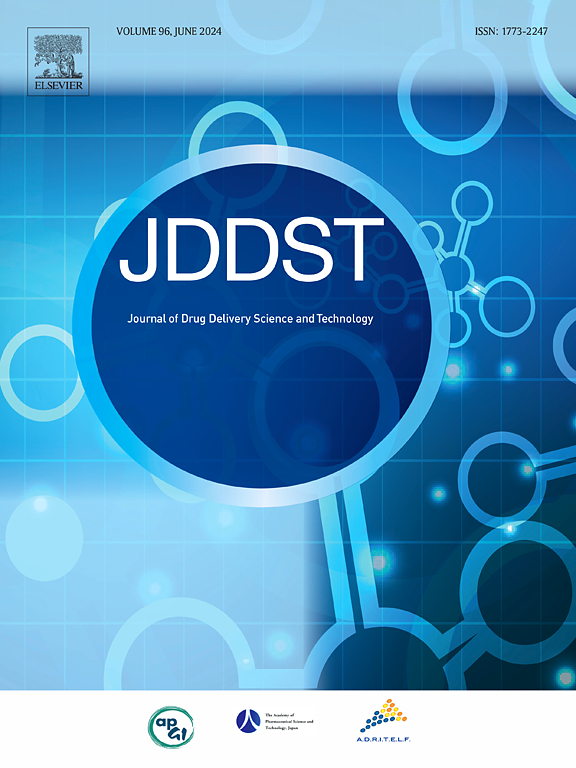Lipid nanoparticles for the treatment of glioblastoma multiforme: Current status of research and clinical translation
IF 4.5
3区 医学
Q1 PHARMACOLOGY & PHARMACY
Journal of Drug Delivery Science and Technology
Pub Date : 2025-04-02
DOI:10.1016/j.jddst.2025.106891
引用次数: 0
Abstract
Glioblastoma multiforme (GBM) is the most common malignant brain tumor, associated with poor prognosis, high rates of recurrence and low survival spans. Existing standard-of-care regimen includes combined treatments of surgery, radiotherapy and chemotherapy. But these are challenging and exhibit contentious efficacy. The primary obstacle revolves around chemotherapy; delivery of the therapeutic agents across the highly fortified blood-brain-barrier (BBB), brain-tumor-blood-barrier and their uptake in the tumor cells remains highly challenging. Nanocarriers, within this context, can be implemented for delivering drug payloads across the physiological barriers like BBB. Owing to their small dimensions and high receptivity for surface modification, they can significantly contribute to higher drug bioavailability at tumor site through numerous active targeting approaches. In this review, we have focused specifically on lipid-based nanoparticles (LBNPs) for addressing targeted therapy in GBM. They have been perceived as attractive candidates for brain tumor targeting due to their desirable characteristics of biocompatibility, lesser toxicity, facile BBB traversal as well as achievable transport of hydrophobic as well as hydrophilic drugs. This review aims to provide a comprehensive understanding of the current challenges in GBM treatment and to collate the experimental findings, evidences, developments in the niche area of active GBM targeting through LBNPs for overcoming the its treatment obstacles. Additionally, the key areas where substantial efforts are needed to take this treatment path forward, have been stressed upon towards the conclusion of this work.

求助全文
约1分钟内获得全文
求助全文
来源期刊
CiteScore
8.00
自引率
8.00%
发文量
879
审稿时长
94 days
期刊介绍:
The Journal of Drug Delivery Science and Technology is an international journal devoted to drug delivery and pharmaceutical technology. The journal covers all innovative aspects of all pharmaceutical dosage forms and the most advanced research on controlled release, bioavailability and drug absorption, nanomedicines, gene delivery, tissue engineering, etc. Hot topics, related to manufacturing processes and quality control, are also welcomed.

 求助内容:
求助内容: 应助结果提醒方式:
应助结果提醒方式:


